Women Make Film: A New Road Movie Through Cinema Episode Rating Graph
Sep 2018 - May 2020
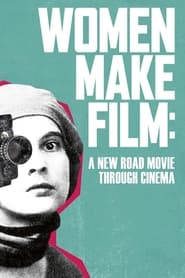
Sep 2018 - May 2020
7.3

| E1 | E2 | E3 | E4 | E5 | E6 | E7 | E8 | E9 | E10 | E11 | E12 | E13 | E14 | |
|---|---|---|---|---|---|---|---|---|---|---|---|---|---|---|
| S1 |
Browse episode ratings trends for Women Make Film: A New Road Movie Through Cinema. Simply click on the interactive rating graph to explore the best and worst of Women Make Film: A New Road Movie Through Cinema's 14 episodes.
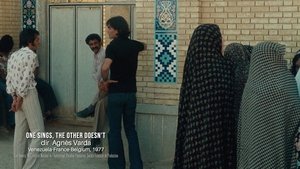
S1 Ep7
8.5
18th May 2020
“Bodies”. Bodies in cinema can be enticing, athletic, or brutalized. Jane Fonda narrates this chapter about how some of the great directors—including Agnès Varda, Andrea Arnold, Marva Nabili, Pirjo Honkasalo, Márta Mészáros, and Wanda Jakubowska—have filmed bodies. “Sex”. From bodies to sex—one of the most controversial aspects of film. In this chapter Diane Kurys, Lucile Hadžihalilović, Jamie Babbit, Safi Faye, Athina Rachel Tsangari, Alison de Vere, Carine Adler, Donna Deitch, Miranda July, Lucía Puenzo, Maren Ade, Chantal Akerman, and others show a variety of ways of showing sex on screen.
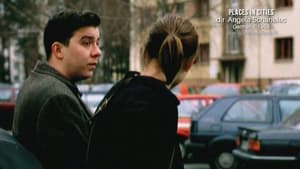
S1 Ep3
8.3
1st Sep 2018
“Conversation”. A basic human interaction—how to make it cinematic? “Framing”. Frames describe and paint the scenes. They shape the cinematic world. “Tracking”. Tracking shots are too many an essence of filmmaking magic. They can ask questions and speak when hardly anyone else in the film is talking. Kinetic in nature, tracking can help dynamically show and express a desperate escape.
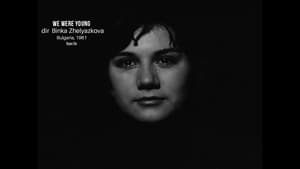
S1 Ep1
8.3
1st Sep 2018
“Openings”. With examples from 1943 to 2013, from China to Iran, Australia to Finland, we look at how to open a film: from mysterious, direct, floating, foreboding beginnings to plunging straight in. All are instructive in how to create an immediate world. “Tone”. What’s the tone of a film—not its story or theme, but what its world feels like? This chapter looks at the myriad ways in which directors set the tones of their films: delight, anger, poetry, double tones, moral seriousness, caring, edginess, and violence.
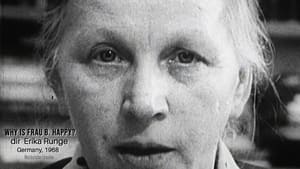
S1 Ep2
8.3
1st Sep 2018
“Believability”. It’s easy to spot, but not so easy to understand. Believability is about simple human stories, the truth about life, real emotions, and responding to the world. How do directors create a reality without it feeling fake? True stories can help. But what’s the trick? “Introducing Character”. Going to a house, overhearing people, witnessing bizarre action—there are many ways to meet people and be introduced to characters in films. “Meet Cute”. The classic Hollywood trope of a “meet cute” invites a variety of interpretations, from intimate glimpses to worlds colliding spectacularly.
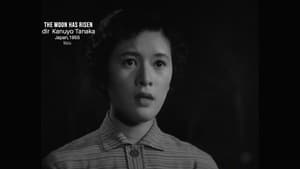
S1 Ep4
8.0
1st Sep 2018
“Staging”. Scene staging is an element of film form pointing clearly to cinema’s origin: theater. “Journey”. Movement is key to a motion picture, and journeys in film can be horizontal as well as vertical (into the self). Travel can be like glue and bind characters from two different worlds. “Discovery”. Discovery and revelation shape some of cinema’s most iconic moments. But beyond the best-known scenes, there lies the humanity, craft, and insight of discovery.
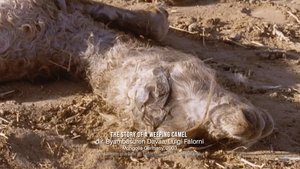
S1 Ep5
8.0
18th May 2020
“Adult/Child”. Most famous movie genres—war pictures, westerns, etc.—are about adults, but in this chapter, Jane Fonda narrates the story of eighteen films about children, from Germany, Belgium, Mongolia, Sweden, Russia, Canada, Senegal, Argentina, and Scotland. “Economy”. We’ve all seen overblown films, but what are the visual and story lessons we can learn from Claire Denis, Maria Louisa Bemberg, Kinuyo Tanaka, Agnès Varda, Valeska Grisebach, and Desiree Akhavan about keeping things simple? “Editing”. How have filmmakers like Ava Du Vernay, Kathryn Bigelow, Sarah Maldoror, Leni Riefenstahl, and Drahoméra Vihanová and their editors pushed the techniques of editing to their limits?
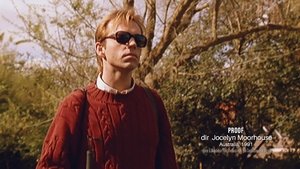
S1 Ep6
8.0
18th May 2020
“POV”. Is cinema the art of point of view? Jocelyn Moorhouse, Ida Lupino, Edith Carlmar, Sofia Coppola, Liliana Cavani, Kelly Reichardt, Larisa Shepitko, Jennifer Kent, and other great directors demonstrate the art of POV. “Close-up”. Films from Belgium, Hungary, Australia, Finland, China, the United States, France, Germany and Ukraine, shot over ten decades, show how close-ups create intensity. “Dream”. One of the great movie stars, India’s Sharmila Tagore, narrates this bold chapter that looks at dreams in films, including WAYNE’S WORLD, Jane Campion, Sally Potter, and silent movies.
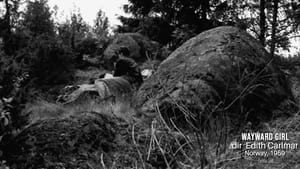
S1 Ep8
8.0
18th May 2020
“Home”. Refuge, shelter, or prison? Sharmila Tagore narrates the story of home on-screen in the great films of Edith Carlmar, Lynne Ramsay, Mai Zetterling, Liu Jiayin, Forough Farrokhzad, Antonia Bird, and others. “Religion”. Narrator Sharmila Tagore takes us on a global tour of great films about religion. We start in the U.S. in the 1910s, go to Sri Lanka in the ’70s, and dip into the work of Lucrecia Martel, Jessica Hausner, and Marjane Satrapi. “Work”. Work seems too unglamorous for cinema, but as narrator Jane Fonda tells us, in films like AMERICAN HONEY, the silent Russian masterpiece WOMEN OF RYAZAN, Venezuela’s ARAYA, Patty Jenkins’s MONSTER, and Mary Harron’s AMERICAN PSYCHO, some of the most engrossing scenes show work.

S1 Ep1
8.3
1st Sep 2018
“Openings”. With examples from 1943 to 2013, from China to Iran, Australia to Finland, we look at how to open a film: from mysterious, direct, floating, foreboding beginnings to plunging straight in. All are instructive in how to create an immediate world. “Tone”. What’s the tone of a film—not its story or theme, but what its world feels like? This chapter looks at the myriad ways in which directors set the tones of their films: delight, anger, poetry, double tones, moral seriousness, caring, edginess, and violence.

S1 Ep2
8.3
1st Sep 2018
“Believability”. It’s easy to spot, but not so easy to understand. Believability is about simple human stories, the truth about life, real emotions, and responding to the world. How do directors create a reality without it feeling fake? True stories can help. But what’s the trick? “Introducing Character”. Going to a house, overhearing people, witnessing bizarre action—there are many ways to meet people and be introduced to characters in films. “Meet Cute”. The classic Hollywood trope of a “meet cute” invites a variety of interpretations, from intimate glimpses to worlds colliding spectacularly.

S1 Ep3
8.3
1st Sep 2018
“Conversation”. A basic human interaction—how to make it cinematic? “Framing”. Frames describe and paint the scenes. They shape the cinematic world. “Tracking”. Tracking shots are too many an essence of filmmaking magic. They can ask questions and speak when hardly anyone else in the film is talking. Kinetic in nature, tracking can help dynamically show and express a desperate escape.

S1 Ep4
8.0
1st Sep 2018
“Staging”. Scene staging is an element of film form pointing clearly to cinema’s origin: theater. “Journey”. Movement is key to a motion picture, and journeys in film can be horizontal as well as vertical (into the self). Travel can be like glue and bind characters from two different worlds. “Discovery”. Discovery and revelation shape some of cinema’s most iconic moments. But beyond the best-known scenes, there lies the humanity, craft, and insight of discovery.

S1 Ep5
8.0
18th May 2020
“Adult/Child”. Most famous movie genres—war pictures, westerns, etc.—are about adults, but in this chapter, Jane Fonda narrates the story of eighteen films about children, from Germany, Belgium, Mongolia, Sweden, Russia, Canada, Senegal, Argentina, and Scotland. “Economy”. We’ve all seen overblown films, but what are the visual and story lessons we can learn from Claire Denis, Maria Louisa Bemberg, Kinuyo Tanaka, Agnès Varda, Valeska Grisebach, and Desiree Akhavan about keeping things simple? “Editing”. How have filmmakers like Ava Du Vernay, Kathryn Bigelow, Sarah Maldoror, Leni Riefenstahl, and Drahoméra Vihanová and their editors pushed the techniques of editing to their limits?

S1 Ep6
8.0
18th May 2020
“POV”. Is cinema the art of point of view? Jocelyn Moorhouse, Ida Lupino, Edith Carlmar, Sofia Coppola, Liliana Cavani, Kelly Reichardt, Larisa Shepitko, Jennifer Kent, and other great directors demonstrate the art of POV. “Close-up”. Films from Belgium, Hungary, Australia, Finland, China, the United States, France, Germany and Ukraine, shot over ten decades, show how close-ups create intensity. “Dream”. One of the great movie stars, India’s Sharmila Tagore, narrates this bold chapter that looks at dreams in films, including WAYNE’S WORLD, Jane Campion, Sally Potter, and silent movies.

S1 Ep7
8.5
18th May 2020
“Bodies”. Bodies in cinema can be enticing, athletic, or brutalized. Jane Fonda narrates this chapter about how some of the great directors—including Agnès Varda, Andrea Arnold, Marva Nabili, Pirjo Honkasalo, Márta Mészáros, and Wanda Jakubowska—have filmed bodies. “Sex”. From bodies to sex—one of the most controversial aspects of film. In this chapter Diane Kurys, Lucile Hadžihalilović, Jamie Babbit, Safi Faye, Athina Rachel Tsangari, Alison de Vere, Carine Adler, Donna Deitch, Miranda July, Lucía Puenzo, Maren Ade, Chantal Akerman, and others show a variety of ways of showing sex on screen.

S1 Ep8
8.0
18th May 2020
“Home”. Refuge, shelter, or prison? Sharmila Tagore narrates the story of home on-screen in the great films of Edith Carlmar, Lynne Ramsay, Mai Zetterling, Liu Jiayin, Forough Farrokhzad, Antonia Bird, and others. “Religion”. Narrator Sharmila Tagore takes us on a global tour of great films about religion. We start in the U.S. in the 1910s, go to Sri Lanka in the ’70s, and dip into the work of Lucrecia Martel, Jessica Hausner, and Marjane Satrapi. “Work”. Work seems too unglamorous for cinema, but as narrator Jane Fonda tells us, in films like AMERICAN HONEY, the silent Russian masterpiece WOMEN OF RYAZAN, Venezuela’s ARAYA, Patty Jenkins’s MONSTER, and Mary Harron’s AMERICAN PSYCHO, some of the most engrossing scenes show work.

S1 Ep9
8.0
18th May 2020
“Politics”. Another aspect of everyday life. From silent cinema to the twenty-first century, movies from the visually astonishing THE ENCHANTED DESNA to DIVORCE IRANIAN STYLE to STRANGE DAYS have gained their energy and attack from their politics. “Gear Change”. We like to be taken by surprise in films. This short chapter, narrated by Sharmila Tagore, looks at such surprises. “Comedy”. Is comedy universal? Who have been the great comedy filmmakers around the world? Narrator Sharmila Tagore talks us through scenes from BIG with Tom Hanks, Ida Lupino’s THE TROUBLE WITH ANGELS, the great movies of Elaine May, the classic Norwegian comedy FOOLS IN THE MOUNTAINS, and more.
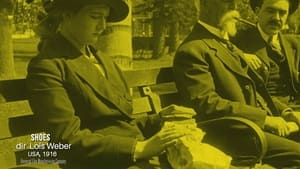
S1 Ep10
8.0
18th May 2020
“Melodrama”. A genre as popular as comedy, but what are some of the great scenes in melodrama? Sharmila Tagore narrates a story that takes us from the silent American film SHOES to Kira Muratova’s brilliant CHEKHOV’S MOTIFS to Binka Zhelyazkova’s visually remarkable WE WERE YOUNG. “Sci-Fi”. Our look at sci-fi takes us to unusual places, other realms: Kathryn Bigelow, the Wachowski siblings, Patty Jenkins’s WONDER WOMAN, Lori Petty’s TANK GIRL, and the TV version of Margaret Atwood’s “The Handmaid’s Tale.” “Horror & Hell”. Literal, figurative, political—in Deepa Mehta’s EARTH, Samira Makhmalbaf’s BLACKBOARDS, Jennifer Kent’s horror masterpiece THE BABADOOK, Joanna Hogg’s squirm-inducing ARCHIPELAGO, the Tunisian film THE SILENCES OF THE PALACE, and more.
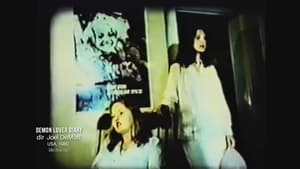
S1 Ep11
8.0
18th May 2020
“Tension”. Thrillers, and so much more. We look at gripping scenes in films as diverse as Joel DeMott’s documentary DEMON LOVER DIARY, Kathryn Bigelow’s BLUE STEEL, Carol Morley’s DREAMS OF A LIFE, Mimi Leder’s THE PEACEMAKER, and Marleen Gorris’s remarkable A QUESTION OF SILENCE. “Stasis”. Cinema is an action art, isn’t it? Or is it? Directors Angela Schanelec, Nanouk Leopold, Kira Muratova, Chantal Akerman, Sharon Lockhart, and Sabiha Sumar, among others, show us the pleasures and beauties of the held moment. “Leave Out”. Movies show us the world, but what happens when they don’t show something? In this chapter, some of the great filmmakers from around the world withhold a moment or a scene, and their films are better for it.
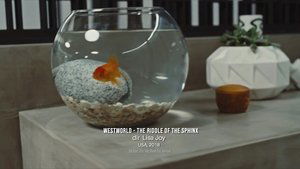
S1 Ep12
8.0
18th May 2020
“Reveal”. How does Lynne Ramsay do a reveal, in MORVEN CALLAR? How does the great actor-director Kinuyo Tanaka? Or Sarah Polley? Or Alice Rohrwacher? “Memory”. As cinema is a kind of time machine, it’s no surprise that it’s great at representing memory. In this chapter we look at rare movie gems about memory directed by filmmakers including Petra Costa, Maria Plyta, Dorota Kędzierzawska, Věra Chytilová, Mai Zetterling, and Mati Diop. “Time”. Every filmmaker has to think about time. As this chapter shows, Alice Guy-Blaché, Chantal Akerman, Ildikó Enyedi, Hanna Polak, Marie Menken, and Sally Potter have done so brilliantly.
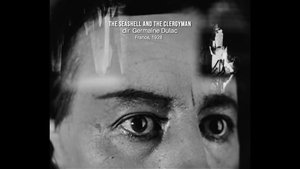
S1 Ep13
8.0
18th May 2020
“Life Inside”. Novels are great at describing thoughts, but how do films do so? In this chapter, we see how great directors from France, Ukraine, the UK, the U.S., New Zealand, and Algeria have illuminated inner life. “The Meaning of Life”. In the last chapters of our story, we look at the biggest things in life. Here we see how great filmmakers across the world, and from many decades, try to get to the essence of life. “Love”. Movies soar with love, but can be too sentimental because of it. In this chapter, we see great Chinese, Sri Lankan, American, Hungarian, Iranian, French, British, Korean, Turkish, and Hong Kong films which avoid the pitfalls.

S1 Ep14
8.0
18th May 2020
“Death”. The biggest subject in life, the most universal subject—no wonder that Japan’s Kinuyo Tanaka, Canada’s Caroline Leaf, Spain’s Ana Mariscal, Holland’s Paula Van der Oest, and other great filmmakers in this chapter embrace it. “Endings”. We begin to end our epic road movie with films from Sonja Heiss, Larisa Shepitko, Ida Lupino, Lizzie Borden, Claire Denis, and Maya Deren. “Song and Dance”. End with a song, they say, so our story does. Huang Shuqin, Vera Stroyeva, Margaret Tait, Alice Guy-Blaché, Edith Carlmar, Céline Sciamma, Gilda de Abreu, Joan Micklin Silver, Shirley Clarke, Dorothy Arzner, and Beyonce make music with their films. We conclude our story, our road movie, and end in an unexpected place...
Loading...
The first episode of Women Make Film: A New Road Movie Through Cinema aired on September 01, 2018.
The last episode of Women Make Film: A New Road Movie Through Cinema aired on May 18, 2020.
There are 14 episodes of Women Make Film: A New Road Movie Through Cinema.
There is one season of Women Make Film: A New Road Movie Through Cinema.
No.
Women Make Film: A New Road Movie Through Cinema has ended.